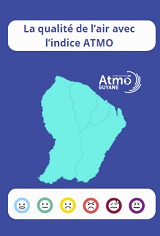Blada.com
vendredi 21 novembre
Boîtes aux lettres
Courrier des lecteurs
Petites annonces
Emploi / Formation
Covoiturage
Infos citoyennes
Infos citoyennes
01/10/21
Les traitements par anticorps monoclonaux débutent en Guyane
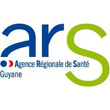 Trois premiers patients de l’hôpital de Cayenne et 6 à St Laurent du Maroni ont reçu le traitement Ronapreve contre le Covid-19. Celui-ci peut être administré aux patients à risque infectés, dans les cinq premiers jours d’évolution de la maladie, s’ils ne sont pas sous oxygène et ne nécessitent pas d’hospitalisation. Il peut aussi être administré en prophylaxie à des patients à très haut risque et n’ayant pas répondu à la vaccination, ou à des cas contact à très haut risque qui n’ont pas de schéma vaccinal complet ou n’ont pas répondu à la vaccination. Les professionnels de santé ont donc un rôle à jouer dans l’identification des patients et leur orientation vers les infectiologues. De par la lourdeur du traitement et la faible persistance des anticorps fournis à l’organisme, les anticorps monoclonaux ne peuvent pas remplacer la vaccination. Le Dr Mathilde Boutrou, infectiologue au centre hospitalier de Cayenne, revient en détails sur ce traitement.
Trois premiers patients de l’hôpital de Cayenne et 6 à St Laurent du Maroni ont reçu le traitement Ronapreve contre le Covid-19. Celui-ci peut être administré aux patients à risque infectés, dans les cinq premiers jours d’évolution de la maladie, s’ils ne sont pas sous oxygène et ne nécessitent pas d’hospitalisation. Il peut aussi être administré en prophylaxie à des patients à très haut risque et n’ayant pas répondu à la vaccination, ou à des cas contact à très haut risque qui n’ont pas de schéma vaccinal complet ou n’ont pas répondu à la vaccination. Les professionnels de santé ont donc un rôle à jouer dans l’identification des patients et leur orientation vers les infectiologues. De par la lourdeur du traitement et la faible persistance des anticorps fournis à l’organisme, les anticorps monoclonaux ne peuvent pas remplacer la vaccination. Le Dr Mathilde Boutrou, infectiologue au centre hospitalier de Cayenne, revient en détails sur ce traitement.
Que sont les anticorps monoclonaux ?
Contre le Covid-19, il s’agit d’une bithérapie de deux anticorps monoclonaux. Ils sont produits à partir de cellules immortalisées, programmées pour produire un seul type d'anticorps toujours identique. Chacun est dirigé contre la protéine Spike du Covid. Ils agissent conjointement pour neutraliser cette protéine Spike.
Comment ces traitements sont-ils apparus ?
Après avoir identifié les protéines responsables de l’entrée du Covid dans les cellules, on a pu identifier, chez les patients convalescents, les anticorps dirigés contre ces protéines. On a sélectionné ceux qui avaient le plus fort effet neutralisant. On a vu que les anticorps dirigés contre la protéine Spike neutralisaient le virus. Plusieurs laboratoires s’y sont intéressés. Ils ont produit plusieurs anticorps monoclonaux différents (dirigés contre différents loci de la protéine) qui étaient efficaces in vitro.
Quand les traitements sont-ils apparus ?
Dès 2020 ! Il y a d’abord eu les promesses de recherche sur les plasmas de convalescents. On prend le plasma des patients dans lequel les anticorps sont déjà présents. Puis quand on a identifié exactement les anticorps efficaces et qu’on a pu les produire, ils ont été utilisés en monothérapie. Ils ont d'abord montré une bonne efficacité contre la souche initiale pour diminuer la charge virale chez les patients, puis en prévention des formes graves. Mais petit à petit, on s’est rendu compte qu’il y avait des risques de résistance. Actuellement on les utilise en bithérapies, avec deux anticorps légèrement différents, ce qui augmente le pouvoir neutralisant et diminue le risque de résistance.
Ce traitement est arrivé en Guyane…
Ces bithérapies d’anticorps sont utilisées depuis le début de l’année 2021. Mais elles n’étaient pas efficaces sur le variant gamma (brésilien). Vue la forte circulation, jusqu’en août, de ce variant, nous ne pouvions pas utiliser les anticorps monoclonaux. On peut le faire depuis que le variant delta a pris le dessus et que de nouvelles études ont montré l’efficacité, sur ce variant, d’une des bithérapies : le Ronapreve (Casirivimab – Imdevimab). Depuis fin août, l’ANSM et la HAS ont également élargi les indications et facilité l’accès à ces traitements.
Est-il déjà utilisé chez nous ?
Oui. A Cayenne, trois patients à risque, dialysés, ont reçu ce traitement dans les premiers jours de leur infection. Six patients ont également été traités au Chog. Ils n’ont pas développé de forme grave. C’est plutôt prometteur.
A quels types de patients ce traitement s’adresse-t-il ?
Aux patients à risque de développer une forme grave. L’idée est d’aider le patient à se défendre du virus en lui apportant des anticorps déjà tout prêts, pour éviter les formes graves, les décès, les hospitalisations. On les donne aux patients à risque, dans les cinq premiers jours d’évolution de la maladie (dans les 5 premiers jours après un test RT-PCR positif ou le début des symptômes). Il faut que ces symptômes ne soient pas graves : pas d’oxygène et pas d’indication pour une hospitalisation.
Qui sont les patients à risque ?
Ce sont les patients avec une forte immunosuppression (chimiothérapie ou traitements immunosuppresseurs, déficit immunitaire, hémopathie, greffe d’organes, dialyse) mais aussi des patients qui ont des facteurs de risque (hypertendus, diabétiques, obèses, insuffisant cardiaque, rénaux, respiratoire), ou certaines maladies rares (fibrose pulmonaire, sclérose latérale amyotrophique, myopathie, trisomie 21). Sont également considérés à risque tous les patients de plus de 80 ans.
Quels sont les recommandations en prophylaxie ?
Il y a deux recommandations en prophylaxie :
- En pré-exposition : chez des patients très à risque, très immunodéprimés, qui n’auraient pas répondu à la vaccination malgré trois doses de vaccin et dont la sérologie reste négative. Il s’agit donc de patients qui n’arrivent pas à produire d’anticorps. On peut alors les inclure dans des programmes de perfusions d’anticorps mensuelles, avec de plus petites doses, pour leur permettre d’être protégés vis-à-vis de l’épidémie actuelle ;
- En post-exposition immédiate : pour des patients très à risque qui n’ont pas répondu à la vaccination ou qui n’ont pas de schéma vaccinal complet. On leur propose le traitement s’ils ont été cas contacts pour leur éviter de développer la maladie.
Comment les patients sont-ils orientés vers vous ?
Il y a trois possibilités à Cayenne :
- Les médecins généralistes peuvent identifier des patients à risque dans les cinq premiers jours d’évolution de la maladie, ou identifier des patients vaccinés qui n’ont pas répondu à la vaccination. Cela doit alors être contrôlé par une sérologie. Ils appellent l’équipe mobile ou l’astreinte d’infectiologie qui valide l’indication. Les patients sont ensuite adressés aux urgences pour recevoir leur perfusion ;
- Des patients se présentent directement aux urgences. Ils n’ont pas d’indication à être hospitalisés mais répondent aux indications de la perfusion. Le médicament peut être administré directement aux urgences, après validation par l’équipe d’infectiologie ;
- Enfin, les praticiens des différents services hospitaliers peuvent identifier des patients à risque parmi leur patientèle et nous contacter.
Conseillez-vous à un médecin qui a un patient à très fort risque de forme grave et qui s’est fait vacciner, de l’orienter vers une sérologie ?
Oui. On en a déjà parlé avec l’URPS. Il faut d’abord identifier ses patients à risque, vérifier leur statut vaccinal et contrôler leur réponse vaccinale par une sérologie, pour savoir s’ils ont l'indication d'une prophylaxie mensuelle. Cette sérologie pour la détection d’anticorps anti-Spike se fait dans n’importe quel laboratoire. Cela permet aussi de discuter en amont du traitement par anticorps avec le patient.
Comment cela se passe-t-il pour le patient ?
On contrôle la PCR au moment où le patient vient pour sa perfusion et pour savoir quel variant il a. La perfusion dure une heure, puis on le surveille une heure. Il est ensuite renvoyé à domicile avec une surveillance par saturomètre qu’il effectue lui-même ou par une infirmière. Il y a une téléconsultation et une PCR à sept jours puis une téléconsultation un mois plus tard pour s’assurer que le patient va bien et que sa PCR s’est négativée. Cela n’empêche pas qu’il doive respecter l’isolement lié au Covid-19.
Quelle est l’efficacité du traitement ?
On a d’abord remarqué une diminution de la charge virale chez les patients. Surtout, pour les personnes positives, il y a une diminution du risque de développer une forme grave – décès ou hospitalisation – de 70 %. Pour les cas contacts, le risque d’attraper le Covid est réduit de 66 %. Pour des patients très à risque, ce n’est pas négligeable.
Ce traitement est-il disponible dans les trois hôpitaux publics ?
Oui. Les commandes sont effectuées par Santé publique France. Chaque hôpital a estimé ses besoins. Une livraison a eu lieu mi-septembre dans les trois hôpitaux pour couvrir leurs besoins.
Alors que la vaccination a du mal à prendre, pourquoi ne propose-t-on pas plus largement ce traitement en prophylaxie ?
Contrairement au vaccin, où on apprend au corps à développer ses propres anticorps pour résister au virus, avec ce traitement, on apporte directement le mélange d’anticorps à l’organisme. Il va pouvoir lutter contre le virus à un instant T. Mais ces anticorps, quand ils ne sont pas produits régulièrement, disparaissent en quelques semaines ou quelques mois. Nous sommes dans une épidémie active. Les patients à risque peuvent donc être exposés plusieurs fois. Il faut donc renouveler régulièrement le traitement pour qu’il soit efficace.
Ce traitement nécessite aussi une organisation hospitalière plus lourde : il faut perfuser le patient, assurer une surveillance. C’est quasiment une demi-journée de prise en charge. A Cayenne, pour les patients positifs, cela se déroule aux urgences, qui sont déjà très sollicitées par l’épidémie. Cela ne peut pas être généralisé à des centaines de milliers de personnes. Ce traitement est disponible en plus petite quantité. Enfin le coût n’est pas négligeable : plusieurs milliers d’euros par dose.
Ce traitement peut-il générer des effets secondaires ?
Comme tout traitement, il peut y avoir des effets secondaires. Les effets observés immuno-allergiques immédiats ou au moment de la perfusion. Ils sont rares. Les dernières études en vie réelle montrent 0,3 % d’effets secondaires supérieurs à grade 2, c’est-à-dire sévères. Pour prévenir ces effets secondaires, la perfusion se fait sous surveillance, en milieu médicalisé. Il y a ensuite une surveillance d’une heure après la fin de la perfusion, avant que le patient ne rentre à domicile.
Cet article est issu de la Lettre pro de l’Agence régionale de santé. Vous pouvez vous y abonner en remplissant le formulaire suivant : https://forms.sbc28.com/5a8bed50b85b5350ef1cd117/t13M7zUZQi2XMq5E3DdnhQ/0WQoeDwjRXqJblCpKbLDzA/form.html
The first three patients at Cayenne hospital and 6 in St Laurent du Maroni received Ronapreve treatment against Covid-19. It can be given to at-risk infected patients, within the first five days of disease progression, if they are not on oxygen and do not require hospitalization. It can also be given as prophylaxis to very high-risk patients who have not responded to vaccination, or to very high-risk contact cases who do not have a complete vaccination schedule or have not responded to vaccination. vaccination. Healthcare professionals therefore have a role to play in identifying patients and referring them to infectious disease specialists. Due to the cumbersome treatment and the low persistence of the antibodies supplied to the body, monoclonal antibodies cannot replace vaccination. Dr Mathilde Boutrou, infectious disease specialist at the Cayenne hospital center, discusses this treatment in detail.
What are monoclonal antibodies?
Against Covid-19, it is a dual therapy of two monoclonal antibodies. They are produced from immortalized cells, programmed to produce a single type of antibody that is always the same. Each is directed against the Covid Spike protein. They work together to neutralize this Spike protein.
How did these treatments come about?
After identifying the proteins responsible for the entry of Covid into cells, we were able to identify, in convalescent patients, the antibodies directed against these proteins. We selected those which had the strongest neutralizing effect. It has been seen that the antibodies directed against the Spike protein neutralize the virus. Several laboratories have taken an interest in it. They produced several different monoclonal antibodies (directed against different loci of the protein) which were effective in vitro.
When did the treatments appear?
From 2020! First there were promises of research on convalescent plasmas. Plasma is taken from patients in which the antibodies are already present. Then when we identified exactly the effective antibodies and could produce them, they were used as monotherapy. They first showed good efficacy against the initial strain in reducing the viral load in patients, then in preventing severe forms. But gradually, we realized that there were risks of resistance. Currently they are used in dual therapy, with two slightly different antibodies, which increases the neutralizing power and reduces the risk of resistance.
This treatment has arrived in French Guiana ...
These dual antibody therapies have been used since early 2021. But they were not effective on the (Brazilian) gamma variant. Due to the heavy circulation of this variant until August, we could not use the monoclonal antibodies. This can be done since the delta variant took over and new studies have shown the efficacy, on this variant, of one of the dual therapies: Ronapreve (Casirivimab - Imdevimab). Since the end of August, the ANSM and the HAS have also broadened the indications and facilitated access to these treatments.
Is it already in use with us?
Yes. In Cayenne, three patients at risk, on dialysis, received this treatment in the first days of their infection. Six patients were also treated with Chog. They did not develop a serious form. It’s pretty promising.
What types of patients is this treatment for?
Patients at risk of developing a severe form. The idea is to help the patient defend themselves from the virus by providing them with ready-made antibodies, to avoid serious forms, death and hospitalization. They are given to patients at risk, within the first five days of disease progression (within the first 5 days after a positive RT-PCR test or onset of symptoms). These symptoms should not be serious: no oxygen and no indication for hospitalization.
Who are the patients at risk?
These are the patients with a strong immunosuppression (chemotherapy or immunosuppressive treatments, immune deficiency, hemopathy, organ transplant, dialysis) but also patients who have risk factors (hypertensive, diabetics, obese, heart failure, renal, respiratory) , or certain rare diseases (pulmonary fibrosis, amyotrophic lateral sclerosis, myopathy, trisomy 21). All patients over 80 years of age are also considered at risk.
What are the prophylaxis recommendations?
There are two recommendations for prophylaxis:
- Pre-exposure: in patients at high risk, very immunocompromised, who would not have responded to vaccination despite three doses of vaccine and whose serology remains negative. These are therefore patients who cannot produce antibodies. They can then be included in monthly antibody infusion programs, with smaller doses, to allow them to be protected from the current epidemic;
- Immediate post-exposure: for patients at high risk who have not responded to vaccination or who do not have a complete vaccination schedule. They are offered treatment if they have been contacted to prevent them from developing the disease.
How are patients referred to you?
There are three possibilities in Cayenne:
- General practitioners can identify patients at risk within the first five days of disease progression, or identify vaccinated patients who have not responded to vaccination. This should then be checked by serology. They call the mobile team or the infectious disease call that validates the indication. Patients are then referred to the emergency room to receive their infusion;
- Patients present directly to the emergency room. They have no indication to be hospitalized but respond to the indications for the infusion. The drug can be administered directly to the emergency room, after validation by the infectious disease team;
- Finally, practitioners from different hospital departments can identify at-risk patients among their patients and contact us.
Do you advise a doctor who has a patient at very high risk of severe form and who has been vaccinated, to refer him for serology?
Yes. We have already discussed this with the URPS. You must first identify your patients at risk, check their vaccination status and monitor their vaccine response with serology, to find out if they have the indication for monthly prophylaxis. This serology for the detection of anti-Spike antibodies is done in any laboratory. This also makes it possible to discuss the antibody treatment with the patient upstream.
How does it work for the patient?
The PCR is checked when the patient comes for their infusion and to find out which variant they have. The infusion lasts an hour, then we monitor him for an hour. He is then sent home with monitoring by a pulse oximeter, which he performs himself or by a nurse. There is a teleconsultation and a seven-day PCR and then a teleconsultation a month later to make sure the patient is okay and their PCR is negative. This does not prevent him from having to respect the isolation linked to Covid-19.
How effective is the treatment?
First, there was a decrease in the viral load in the patients. Above all, for positive people, there is a 70% decrease in the risk of developing a severe form - death or hospitalization. For contact cases, the risk of catching the Covid is reduced by 66%. For patients at high risk, this is not negligible.
Is this treatment available in the three public hospitals?
Yes. Orders are placed by Public Health France. Each hospital has estimated its needs. A delivery took place in mid-September to the three hospitals to cover their needs.
While vaccination is difficult to take, why is this treatment not more widely offered as a prophylaxis?
Unlike the vaccine, where the body is taught to develop its own antibodies to resist the virus, with this treatment the mixture of antibodies is delivered directly to the body. He will be able to fight against the virus at some point T. But these antibodies, when they are not produced regularly, disappear in a few weeks or a few months. We are in an active epidemic. Patients at risk can therefore be exposed several times. It is therefore necessary to renew the treatment regularly for it to be effective.
This treatment also requires a more cumbersome hospital organization: it is necessary to infuse the patient, ensure monitoring. It's almost half a day of care. In Cayenne, for positive patients, this takes place in the emergency room, which is already very busy with the epidemic. It cannot be generalized to hundreds of thousands of people. This treatment is available in smaller quantities. Finally, the cost is not negligible: several thousand euros per dose.
Can this treatment cause side effects?
Like any treatment, there can be side effects. Immune-allergic effects observed immediately or at the time of infusion. They are rare. The latest real-life studies show 0.3% of side effects above grade 2, i.e. severe. To prevent these side effects, the infusion is done under supervision, in a medical environment. There is then an hour of monitoring after the end of the infusion, before the patient goes home.
This article is from the Professional Letter of the Regional Health Agency. You can subscribe to it by filling out the following form: https://forms.sbc28.com/5a8bed50b85b5350ef1cd117/t13M7zUZQi2XMq5E3DdnhQ/0WQoeDwjRXqJblCpKbLDzA/form.html
Raccourcis

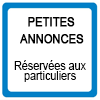
passer une petite annonce
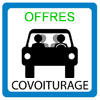
passer une annonce de covoiturage
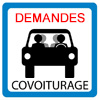
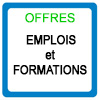
passer une annonce d’emploi
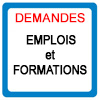
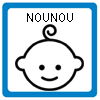
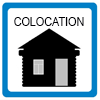
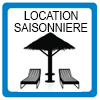
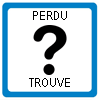
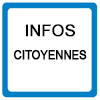
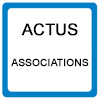
associations, postez vos actualités

participez au courrier des lecteurs
La Guyane c’est ici
La qualité de l’Air avec
ATMO
Photothèque

Lancements 2022
Vol 259 Ariane 5



